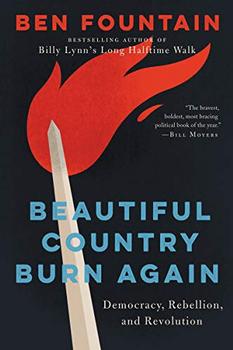Summary | Excerpt | Reviews | Beyond the book | Read-Alikes | Genres & Themes | Author Bio

The Triumph of Fear and the End of the American Dream
by Sasha AbramskyIn September 2015, fourteen-year old Ahmed Mohamed was thrust into the national spotlight when the homemade clock he built out of a pencil case got him detained and expelled from school in Irving, Texas, because authorities mistook it for a bomb. Meanwhile, a few states away in Arkansas, businesswoman Jan Morgan declared her gun range a Muslim-free zone. Her reasoning was simple: She wasn't going to let would-be terrorists train on her range.
Both Mohamed and Morgan, along with a host of ordinary citizens and neurological and psychological experts, form the backbone of Sasha Abramsky's latest book Jumping at Shadows: The Triumph of Fear and the End of the American Dream. Abramsky studies how a fear-driven culture shapes not only the way we interact with one another socially, but how it has impaired our ability to make thoughtful, rational decisions.
Abramsky interviews a cross-section of people, and presents a disturbing, but all too familiar look at how many Americans let their fears dictate their lives. He meets Doomsday Preppers, suburbanites from Sacramento, who fear that "serious interruptions in the infrastructure" could have a huge impact on their daily lives. They simultaneously stoke and assuage those fears by researching related videos on YouTube and stocking up on weapons and canned goods. He talks to a mom from Salt Lake City who is so terrified of school shootings and child kidnappings, that she fears her daughter "felt too 'invincible,' too safe in the world, to be allowed to go out on her own." These provide unwitting examples of how a steady diet of fear can affect people's sense of well-being forcing them to obsess over, as Rick T., a Doomsday Prepper points out, the possibilities of disaster rather than the probabilities.
In between these stories, Abramsky presents a picture of how much American culture has shaped their perceptions of the world. The news media, with its focus on violence and sensationalism, gets the criticism it deserves, but the problems, he notes, go far deeper. Neurological studies yield stunning revelations about how the demands of a fear-induced culture chemically alter the brain, triggering a "fight-flight-or-freeze" response toward perceived threats, whether they be socially ingrained racial and/or religious biases or the news' and social media's fixation on crime, violence, terrorism or other threats.
Ahmed's story is a perfect example of this, but disturbingly his story is not an outlier as other examples in the book illustrate. A heightened state of fear can lead to grave mistakes that can also harm our democratic values and civil liberties. And, as Abramsky points out, whether through corporate interests intent on exploiting these fears—following the Sandy Hook school shooting, businesses sold bulletproof backpacks to panic-stricken parents—or Donald Trump, whose presidential campaign stoked his supporters' irrational fears toward Muslims and immigrants, the public is quite capable of following demagogues and slick snake oil salesmen if it thinks doing so will relieve cultural anxiety and unease. And while the public is distracted by fears of the improbable, it ignores real threats, be it daily gun violence, social and economic inequality, or climate change.
And therein lies the beating heart of Abramsky's powerful argument. He writes with an urgency, a strong sense of purpose, and honesty about how easily a fear-driven culture—one that even the author readily admits to falling victim to—can abandon its democratic ideals. His research is impeccable, though it is often too impeccable. He drives the same points home again and again, which leads to a few particularly mind-numbing stretches in the book. Some of his assertions regarding economic anxiety as the hidden force behind racial animosities are debatable.
However his desire to get the truth out in a culture that bases its political and economic decisions on falsities is justifiable. And his stories of ordinary citizens caught up in a vortex of a fear-driven culture are compelling and heartrending. Jumping at Shadows effectively cuts through the white noise of contemporary America, and is for anyone wondering how we have arrived at this collective crisis point.
![]() This review
first ran in the September 6, 2017
issue of BookBrowse Recommends.
This review
first ran in the September 6, 2017
issue of BookBrowse Recommends.

If you liked Jumping at Shadows, try these:

by Ben Fountain
Published 2019
In a sweeping work of reportage set over the course of 2016, New York Times bestselling author Ben Fountain recounts a surreal year of politics and an exploration of the third American existential crisis.

by J.D. Vance
Published 2018
#1 New York Times Bestseller, named by the Times as one of the "6 books to help understand Trump's win"
Your guide toexceptional books
BookBrowse seeks out and recommends the best in contemporary fiction and nonfiction—books that not only engage and entertain but also deepen our understanding of ourselves and the world around us.